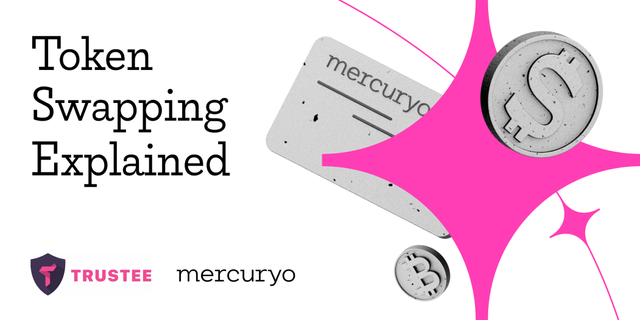
Mercuryo explains hat is token swapping in DeFi
DeFi has given rise to a host of crypto-native decentralised financial offerings. Perhaps most prominent among these is its longest-standing use case — Decentralised Exchanges (DEX) offering Automated Market Making (AMM) for token swaps without needing a centralised exchange.
Trustee Wallet, among others, provides an essential infrastructural tool that makes this possible — offering non-custodial wallets for decentralised transacting.
Understanding Token Swapping in DeFi
It’s first necessary to understand how the dynamics work in centralised exchanges before getting into the nitty-gritty of a decentralised one.
Liquidity and Slippage
Simply put, liquidity refers to how easily one can trade an asset without impacting its market price. When liquidity is high, order books are heavily populated (volume is high), and traders can buy and sell instantly without affecting the asset price.
Conversely, when liquidity is low, orders for the asset in question are scarce, meaning that a trader would have to incur significant to fill an order, which brings us to our next point.
Slippage and liquidity go hand in hand. While liquidity pertains to overall volume, slippage refers to the difference between the quoted market price and the closest available order price at which an asset can be traded for a certain volume.
On centralised exchanges, ensuring sufficient liquidity and reducing slippage is achieved by enlisting Market Makers, who trade pairs and bolster liquidity to ensure a seamless retail trading experience.
Conversely, on decentralised exchanges, anyone can provide liquidity (LP) by adding an equal split of tokens to a trading pair’s liquidity pool. By providing liquidity for smooth transacting, providers earn rewards in the form of fees earned from the trading pair.
Users of decentralised exchanges can access coins not yet listed on centralised exchanges, and have the ability to set the maximum slippage they’re willing to take on a trade.
Smart Swaps
Smart swaps, or atomic swaps, are a means for instantly transacting with tokens from your non-custodial crypto wallet. Simply put, this mechanism matches parties on each end of a desired transaction. For instance, party A wishing to trade 1 ETH for BTC, would be matched with party B, who is attempting to trade their BTC for 1 ETH.
Should there be no matching counterparty at the time of the trade, the trade is conducted using available Liquidity Pools for the trading pair. These swaps offer the advantage of rapid finality without relying on trusting any intermediary, given that smart contracts execute them.
Why Some Prefer DeFi
Services like those provided by Trustee Wallet are preferred by many market participants as funds in these wallets are accessible to you using your private keys. While DeFi provides an added layer of privacy and security, it generally requires a comprehensive knowledge of transacting directly on chain.
To dive deeper into the world of on-chain transacting with your own, private, all-in-one wallet, check out Trustee Wallet’s offerings .
Originally published at https://blog.mercuryo.io.
Yay more Crypto! So much more than money.
Upvoted👍 Reshared🔁
Downvoting a post can decrease pending rewards and make it less visible. Common reasons:
Submit